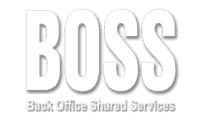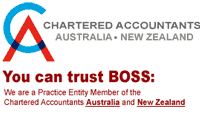Table of Contents (for previous chapters)
Section 1 – Client Referrals
Chapter 1 – Make Asking for Referrals a Part of Your Process
Asking for referrals comes easily for some people, while others can get more than a little uncomfortable. So first things first – let’s make asking for referrals part of your work’s everyday process.
A starter’s tip – When you get referrals make sure you ask permission to use your current client or customer’s name. That way when you get in touch with the new referral you’ll have a mutual friend or business associate that trusts you both. You can mention them instead of trying to start up a conversation out of the blue.
1. Give your clients or customers a reason to give you a referral.
In other words, do great work. Deliver great service. Produce the very best widgets you can provide. Find out all the things that your competition is doing better than you and find ways to top them.
It’s going to be so much easier for you to request referrals if you are proud of the product or service that you provide.
Having a great product and/or service will make it easier for your customers or clients when they’re trying to explain to their friends why they should try you over your competition. On the flip-side, you’re going to be so much more squeamish if you know you’re trying to get people to ask their friends to try out your business when you know you’re presenting subpar products.
Know what the benefits of your business are to customers, know how to articulate this to your referrers and thus make sure they are clear how to present you to other people.
Having a great Unique Selling Point will help you articulate your benefits to prospects too.
2. Are you asking everybody you could be asking?
Existing (and happy) clients are an obvious source of referrals, but are they the only ones you could be asking?
How about the people who supply your business with equipment? Can you perhaps set up a mutually beneficial trade off where they recommend your services (for example, you’re a personal health trainer) and you recommend their gear (they sell sports clothing)?
Can you get your friends on the bandwagon? Ask them who they know that fits your ideal client. Most of them will have social media: ask them to Like your Facebook page or provide a recommendation on LinkedIn etc. Create a list of everybody who can be offering referrals on your behalf. This can include:
- Current clients.
- Friends and family.
- Clients you didn’t convert but you are still on friendly terms with.
- Your employees.
- Your vendors and suppliers.
- Your current prospects that you’re in the process of converting.
- Members of associations or groups that you belong to.
- Prospect connections – other businesses that your prospects trust and admire.
- “Big voices” (a.k.a. Leaders). These might be celebrities, people of standing within certain industries or influencers within a group.
- Magazine or newsletter authors or editors.
- Special interest groups. For example, if you sell athletic wear you might try tennis associations or bowling leagues.
- Companies that are already dealing with the type of clients that you desire for your own business.
- Your competition. (We’ll explain this one in a chapter below.)
3. Make sure you’re asking the right people.
This is the other side of the coin of point #2.
You may have an ideal type of client.
Jot down ideas about what makes for your ideal A-list type of client. Now identify any of your current customers or clients who make that grade. Chances are you’ll have a higher percentage of A-list referrals from current clients who are already in that category, so approach them first.
The reverse of course is that people who are on your D-list, your nightmare customers or clients, are more likely to bring more D-listers to the table, so don’t ask for referrals from them.
- Identify your A-list clients. They can be categorised any number of ways: age, gender, race, income, hobbies, geographic location, membership in a specific organisation, people belonging to a certain industry or business, position or title within a business, types of vacations they take, magazines they subscribe to, people about to go through or have just gone through a major event (wedding, birth of a child, graduation, retirement), someone who has just made a major investment, and so on.
- What type of person can refer you to your A-list clients? Your suppliers, your clients, members of an organisation, other members of your business chain, celebrities, employees of a particular type of business, magazines, special interest groups, blogs, etc.
- Help your current clients identify potential referrals. Your clients might get stuck coming up with enough referrals, so help them out by identifying where they might find them (from your list in Point #1). So for instance if you are a Physiotherapist and you are talking with a client that plays rugby, you can ask who they know that plays rugby that could benefit from a physio.
4. Have a system for asking for referrals.
To gain confidence asking for referrals, make asking for referrals part of your process of doing business. Document the referral-asking so it becomes a concrete part of your customer relations.
You need to have a few systems to ask for referrals at different times to maximise the opportunities you have e.g. at a meeting, after every job that has been completed, after the first two months of having a client engage you. Where possible your system should verify that the client is happy before you ask for the referral.
Happy clients lead to more referrals but you need to ask for referrals to get as many as you can! The easiest way to ask for referrals is when you find someone happy with your service – that is the time to ask for referrals.
But how do you know if your clients are truly happy with what you provide for them?
Different people can respond in different ways so you need lots of different ways of getting feedback. Methods can include surveying on the phone, asking at a face-to-face meeting, sending out a detailed feedback form annually, asking for quick feedback after each job or sale. If you restrict the number of ways you ask for feedback, you limit opportunities to ask for referrals and thus restrict your business growth. It is worth thinking hard of ways to get feedback, then implementing a system.
Example 1 – Post-Job Letters
One method of getting feedback is to send out a follow-up letter. Start out by letting the customer or client know how much you appreciated being able to do business with them. Now, because you value them as your customer, you’d like to get their input on how to improve your business for their benefit.
On a second page (that can be mailed back to you) include a rating system. Make the rating system as simple to use as possible. This system might be boxes to be ticked or rating numbers to be circled that might include such categories as timeliness, courtesy, satisfaction with service, and so on.
The easier it is for your client to fill out, the less reason they’ll have to put it off or to neglect it entirely.
(Along those lines, make sure you pre-pay the postage for the letter or form to be sent to you, or alternatively use email communication.)
Next, make sure there’s space for them to tell you what it is that they didn’t like about your service.
Follow this with a brief note saying that because you enjoyed working with them so much you’d like to extend the benefits that your business has to offer to their contacts, friends and family. Then offer an incentive. Therefore, an example of what you can write is:
“As you know we are totally committed to the success of your business so if you have experienced that commitment in the form of good service I’d like to ask you to return the compliment.
Who else do you know who would benefit from the sort of business advice and support that you’ve enjoyed? I ask you that question because we enjoy working with you so much so if they’re your friend, colleague or contacts I know we’ll enjoy working with them too.
So if you write their details on the questionnaire we’ll offer them as a gift from you, a 10% discount on the first purchase they make.”
This gift turns your current clients into heroes who are connected enough to be able to hand out discounts.
You can also offer an incentive for your current client. If they do offer up a certain number of referrals you’ll give them a free mini consulting session or sample of other wares you sell. So now, your current client has a further incentive to recommend you to others, plus you give them a chance to experience some of your offerings that they might not have experienced before, which may lead to more sales.
Example 2 – End-of-Job Interactions
Let’s say that you provide a service that’s generally a one-stop affair like an on-call plumber. You get called in, you do your job, you fix the drip or prevent the flood, and the job is done.
Ask the client if they were happy with the service and if so ask them who they know who fits your ideal client criteria. If the client isn’t available when you finish the job, leave behind a survey card that asks to give your service a rating based on a number that they can mail in (pre-pay the postage).
Again, make the card as simple as possible for them to fill out – boxes to be checked off or numbers to be circled, or perhaps the words “Poor” “Fine” “Good” and “Excellent” that can be circled.
Leave room where they can write in anything that they feel could help you improve your business. Phrase it that way – that they’re helping you to become better and that your goal is to provide the best possible service that you can.
At the end ask for the names and phone numbers of 3 people who could use your service. When you actually call the referrals, mention the name of the person who referred you and why they think you could benefit the prospect. Have an incentive on the card such as the referrer will be put into a monthly prize draw to win an iPad or the prospect will receive 10% off all parts.
Example 3 – One-on-One Meetings
If you’re the type of business that has a sit down one-on-one meeting with your clients, make part of your process writing up a one-or-two page agenda that outlines the steps you take in such meetings.
This will do two things. First, it will put you in control of the meeting. You’re the one calling the shots of what gets discussed at which point. (It looks really professional and they’ll get to see all the work you do in preparing for such meetings, work that is usually invisible to the customer.)
Second, you put asking for the referral somewhere in the agenda. This way it’s there in black and white, the client knows it’s coming, and you can’t avoid it.
As you know now, to lead into the referral process you first get feedback. Ask the same “Are you happy?”
You can also at this point ask them what your business could be doing to make them happier which, in and of itself, will make them happier. Everyone likes to be listened to.
So once you’ve hit this earlier point and deliberately reminded your client or customer that they’re happy with your business, you’ll now find it easier to ask them to refer some of their friends.
You don’t have to bluntly phrase it as a plea for referrals. If you prefer, try some language along the lines of, “Who else do you know that might benefit from [whatever benefit that you provide]?”
This way it’s phrased not like the client is doing you a favour, but that the client is doing a favour for their friends by recommending your top-notch business.
Make this a specific number of referrals – try for five. You’re likely to get less referrals than the number you’ve actually asked for, so if you ask for three then you may only get one. If you ask for too many, you’ll seem pushy or greedy. Five is a number that should result in two or three good referrals.
Another added bonus – now that you’ve documented the asking-for-referrals process it will become part of your business’ culture, meaning all of your employees will be able to do the same.
Example 4 – Ask for Referrals at the Very Start of Your Relationship
A lot of people see success when they ask for referrals right when they sign on with a new client.
This works especially well if the client is a referral himself, but that’s not absolutely necessary.
It may sound like an awkward way to start a relationship with a new client, but there are a couple of factors that work in your favour.
First, since they’re new to you, that means they’re an ex-customer or client of some of your competition. They didn’t just leave – they left for a reason.
Your business is the antidote to the pain they were feeling having to deal with your competition. You represent relief. Relief engenders gratitude, which is a fine feeling to have present in someone when you ask them for referrals.
Second, you haven’t yet had the chance to make any mistakes. You’re still in the honeymoon period.
If you feel squeamish, a document (like the meeting agenda) can come to the rescue. In the document lay out what it is that you’re going to do for your client. And then lay out what you’re hoping for from the client – to be paid on time, that the client will be honest and upfront with any concerns so that you can solve them right away, and that if they’re happy they’ll mention you to three to five friends.
When you get to the point about discussing referrals, tell your new client that you prefer to base your business off of referrals because it makes your business obliged to focus on maintaining excellent customer service.
If you’d like to see the 3 other parts to this testimonial series, click here
5. Do more than just say “Thank you”.
In the examples shown you can see it is important to reward your customers who come through with referrals. They don’t have to do it, it’s not their job to bring you more business (even if it is in a meeting agenda).
By rewarding the referrals with some token (a little gift, or perhaps a small discount off your services) you encourage your clients to bring in more referrals.
You may wish to reward someone for just giving you the referrals, or just the ones that become paying customers. Offering tokens of gratitude has an added bonus effect – it really makes your business stand out. It makes you look like someone who values their customers, and gives you a leg up on your competition that might be doing nothing at all. Don’t underestimate the power of the gift – few businesses offer this “thank you”.
If you really want to keep 100% of their attention at your meeting, add a final task at the bottom of your agenda that says “$1000 of marketing for free.”
As you know now, start the referral process by getting feedback from the client. Talk to your client directly going through the same type of explanation and questions in Example 1 before.
At the end of the meeting give suitable incentives. Your client may be offered a credit of $200 off the next bill for every person referred by them that becomes a client of yours. In addition, hand them 10 $100 exclusive gift certificates redeemable at your business that they are to give out to people that they think will benefit from your product or service.
This way your client will look good in the eyes of their customers and the prospects have even more reason to contact you. Plus, your client is likely to give the certificates out to their A-lister clients, which means you’ll be getting 10 pre-screened A-listers showing up at your door.


